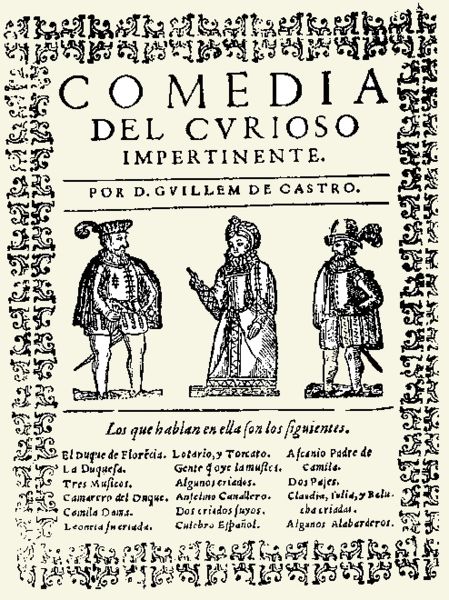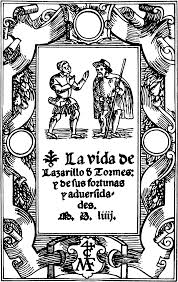Pamphlet: what it is, meaning, definition, characteristics and origin
Contents
What is the subgenre pamphlet?
Although it is also known as libel, it is one of the text formats or subgenres that are part of the literary didactic genre, which consists of a short text whose content is considered to be aggressive and direct. It is often a type of text that appears in the political sphere, since it handles concrete messages and some with a sense of protest that work for political propaganda.
Ultimately, the pamphlet is a type of publication or writing that intends to condemn, defame, attack or directly accuse something or someone. This is the reason why they handle direct messages with a simple and concrete language, which facilitates the understanding of the public and facilitates their dissemination.
Meaning of the subgenre pamphlet
The term -pamphlet- comes from the English pamphlet, although in this language it could be translated as pamphlet, in the case of Spanish it has taken a negative and aggressive connotation that gives meaning to the pamphlet as such, from a character, even subversive.
Definition of the subgenre pamphlet
It is a short piece of writing that can generate controversy due to its aggressive and critical nature, using an incendiary style with the intention of spreading ideas, perspectives, points of view and opinions directed at someone or something, based on a polemic tone. Due to this character, the pamphlet has been used especially in the field of politics for ideological combats, but also for its own propaganda, through which it condemns or defames.
What is the function of the pamphlet?
The intention of the pamphlet, given the type of aggressive and critical content it handles, is the dissemination of an idea or approach that may well be against someone or something specific. Its short length allows the message to be clear and concrete, which facilitates and maximizes the efficiency with which the public receives the message.

History and origin of the pamphlet
The date or specific moment in which the pamphlet was born is still unknown, although many experts explain its origin based on various theories. One of them takes place in Rome, with the libel, a kind of text that was written to public figures, mostly politicians, whose content could discredit their figure or question the honor that was granted at the time.
Around the year 1578 the pamphlet began to be recognized through pocket editions, whose content was against Spain, which would later give rise to “The Black Legend”, since they sought to discredit the country. The pamphlet was of great importance during the 19th century, especially for the workers’ movements of the time that began to use this type of text in order to spread their ideas and thus incite the execution of the liberation of the so-called Communist Manifesto, one of the most influential treatises in politics. During this century, also, pamphlets will be observed that will serve as a means of opposition for the revelation against Franco’s dictatorship.
During the Second World War, the pamphlet also had great importance for the allies and powers, since through them they were publishing content for the battlefields and cities with the intention of overcoming, in the first place, what was considered psychological warfare and thus, persuade the entities of confrontation to achieve victory.
Characteristics of the pamphlet subgenre
Let us look at the most important characteristics of this subgenre:
Style: it is usually called pamphlet style, to the way in which it is expressed from the content of the text, since it is a manifestation of aggressive character that contains a direct and clear message. On the other hand, in addition to the aggressive message, the pamphlet also maintains a critical sense and can easily generate controversy because it raises a clear position under a specific vision towards something or someone. Maintaining an aggressive tone, the pamphlet uses literary resources among which irony and humor stand out in relation to the ideas of what it confronts or actions.
There are many works that, due to their critical and aggressive content, are considered pamphletary works, not only in the literary field, but also in other artistic expressions.
Format: an essential aspect of this subgenre has to do specifically with its format, because, although it has evolved over time, originally it was a pamphlet. This made the reduction of text necessary and combined perfectly with the intention, which is why it was much easier to print a specific message at a low price and which, due to its length, can be easily disseminated.
Nowadays, technological progress has allowed the pamphlet to vary in its presentation, which is why digital pamphlets have begun to be developed, which are also disseminated through these media.
Types of the pamphlet subgenre
Due to the type of text that can be expressed within the pamphlet, over time it has come to develop in various fields, which is why it is possible to identify several types of pamphlet, taking into account, also, its main intention. Let’s see:
Political pamphlet
The main objective of this type of pamphlet is to establish an ideological confrontation, which is why they were mostly used by leaders, but also by clerical figures.
Since the pamphlet was later mixed with the pamphlet, a type of writing of varied content that occupies more pages than the pamphlet, texts began to be developed that, while maintaining the extension, focused on fields such as advertising, information and propaganda in other disciplines other than the political field.

How to write a pamphlet?
A pamphlet can consist of a single page in which specific information is disseminated. Taking into account the aggressive nature of the pamphlet, when writing one of these, it is necessary to have a clear idea of what we want to say in order to choose the right words, so it is important to identify what we want to criticize and to whom it is addressed.
With this in mind, we can proceed with the writing of the text. Remember that it must be short, concise and clear for the target audience. You can use short sentences, even use rhyme to make it much easier for it to stay in people’s memory, use literary resources such as irony and sarcasm, this way you guarantee that the message will have an impact, which is the main intention to generate the critical vision.
Surely on the Internet you will find many images of published pamphlets, especially those that were disseminated during World War II.
